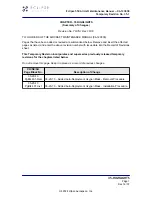
Aircraft Flight Manual
Doc. No. 92/265
1
st
Edition – Rev. 0
2020, February 26
th
TECNAM P92 EchoMKII
M
ANUFACTURER
:
COSTRUZIONI AERONAUTICHE
TECNAM
S.p.A.
A
IRCRAFT MODEL
:
P92 Echo MKII
S
ERIAL NUMBER
: ……………..............
B
UILD YEAR
: ……….………................
R
EGISTRATION MARKINGS
: ……………..
This manual contains information to be furnished to the pilot as required by
LTF-UL in addition to further information supplied by the manufacturer.
This manual must always present on board the aircraft.
The aircraft is to be operated in compliance with information and limitations
contained herein.
Costruzioni Aeronautiche
TECNAM
S.p.A.
Via Maiorise
CAPUA (CE) – Italy
Tel. +39 (0) 823.62.01.34
WEB:
This document and the information thereon is the property of Costruzioni Aeronautiche Tecnam S.p.A., and may only be used for the purpose for which
Tecnam products are supplied, and/or use and maintenance of Tecnam Aircraft.
Reproduction or use of the data, information, drawings thereon, in whole or in part, is strictly prohibited without the express written permission of
Costruzioni Aeronautiche Tecnam.
Summary of Contents for P92 Echo MKII
Page 8: ...Page 0 8 Aircraft Flight Manual SECTION LISTS 1st Edition Rev 0 Intentionally left blank ...
Page 22: ...Page 1 14 Section 1 General 1st Edition Rev 0 INTENTIONALLY LEFT BLANK ...
Page 68: ...Page 4 12 Section 4 Normal Procedures CHECKLISTS 1st Edition Rev 0 INTENTIONALLY LEFT BLANK ...
Page 128: ...Page 9 4 Section 9 AFM Supplements 1st Edition Rev 0 INTENTIONALLY LEFT BLANK ...


























